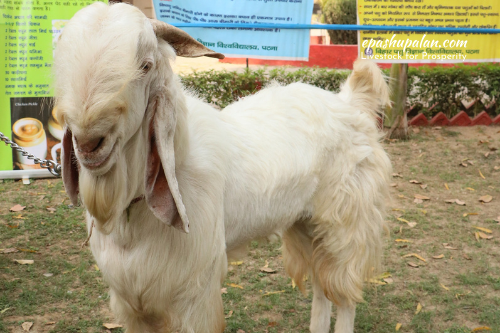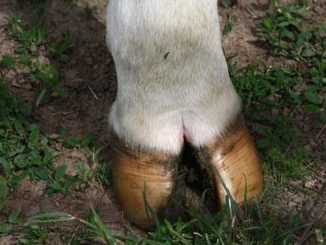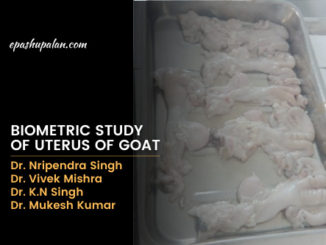The goat is a multi-functional animal that is crucial to the country’s landless, tiny, and marginal farmers’ economy and nutrition. Goat farming is a popular rural occupation that employs a large percentage of the people. Goats can survive in a wide range of ecological conditions by grazing on available bushes and trees in low-fertility areas where no other crop can be cultivated.
In India’s pastoral and agricultural subsistence civilizations, goats are kept as a source of supplemental income and disaster insurance. Goats are also employed to pay social dues and for ceremonial feastings. Furthermore, goats are revered in many cultures for their religious and ritual significance. Small-scale farmers rear goats for milk, meat, fibre, skin, and other products. However, they are commonly raised for meat production, but they also provide a convenient source of milk to suit the family’s needs.
Selection of doe
The nucleus of a productive herd is a good doe. The selection of a doe should be done with care. Good body development is necessary for high milk production. The doe should be well-developed and healthy-looking, with her feet placed straight on the ground rather than on her pastern. She should stand squarely on her feet. The animal should be free from any disease condition. The eyes in healthy animals are bright and alert. Skin is supposed to be loose, supple and free from dryness. They should have regular reproductive cycle, early kidding ability with first kidding at around 16-18 months, good mothering nature and high productivity with persistency in milking.
For milk type goats, the body should be wedge-shaped and sharp. Back should be strong, straight and muscular and ribs should be deep and wide apart. Wide rib cage and broad back indicate better feed intake capacity. Broad rump region indicates more space for carrying the foetus. Wide space between thighs provides room for development of the udder. A large, spherical, well-attached udder should be able to fit between the thighs. Udder should be pliable, broad base, elastic skin, prominent milk vein with thick teats slightly pointing forward. The jaw should be long and powerful and conditions like overshot jaw, undershot jaw or broken mouth should not be selected for breeding. A good milker may have poor flesh, whilst a bad milker may have nice flesh. The neck should be slim and the head should be narrow. The eyes should be clear and brilliant. They should have a true feminine appearance and possess docile bahaviour. Handling, milking, eating, and maintaining nervous goats is difficult. An udder’s milk capacity cannot be determined by its size. A good milk goat’s udder should be smooth and supple rather than meaty. The udder of a recently milked goat should be compressed.
For meat type selection, does having a rectangular conformation and blocky appearance are preferred. They should have good muscle conformation and proper fat reserve. Selection of animals born twin or triplet may increase the kidding percentage in the flock.
Selection of buck
The buck’s frame should be well-developed and solid, with outstanding conformation and breed qualities. The rib depth is really important. Legs should be straight and well-positioned under the body. Both outwardly and internally, the buck should be in good health and free of parasites. He should come from a good milking strain and be the progeny of parents with a proven track record of success. The majority of herders have hornless bucks. A well-grown buck kid can be raised to ‘five or six’ during his first season at an average age of six months. When 18 to 24 months old he may be permitted to service 25 to 30 does, and when fully mature 50 to 60 does in a breeding season. Adequate frame size, with faster growth rate and good muscle reserve are some desirable characteristics.
By behaviour the bucks should be alert, vigorous and braver in action. Males should possess good sexual libido. Breeding soundness examination of the buck can be done to evaluate the breeding potential. It includes physical examination and semen evaluation. Under physical criteria mainly body condition and structural soundness are examined. In semen evaluation the volume, sperm concentration, live sperm count etc. are assessed. Both the testes should be well developed and descend into the scrotum. Testes should not be hard or have any abnormalities. The fertility of the buck can be tested from past records of breeding.

Management of the breeding stock
- Animals for breeding stock should be purchased from a reputable breeder or the nearby livestock market.
- Animals in good health and with good physical qualities must be purchased in consultation with the technical officer of the veterinarian/bank.
- One male can be allowed to breed 30-40 females. However, they have to be replaced each year. In case the males are selected from the farm itself then the male female ratio should be 1:20-30.
- Males and females selected for breeding should not be closely related to avoid inbreeding.
- Animals that are ready to reproduce and are at the peak of their development should be procured.
- Females should attain 70% of adult body weight at their first mating. Breeding at too young age may lead to birth of weak kids with low birth weight and even increase neonatal mortality.
- Females should be purchased at 18-24 months of age for breeding. Males can be used for breeding between 2-5 years.
- Animals should be bred every 8-9 months for maximum yield.
- About 2-3 weeks prior to breeding season does should be provided good quality pasture and concentrate mixture to attain proper body weight at breeding. It also promotes ovulation rate, conception rate and higher number of healthy viable kids can be obtained. Good mixture of fresh pasture, 500 gram legume hay and 250 gram concentrate per day can be provided.
- Males should be fed properly 6 weeks prior to breeding season. 200-500 gram concentrate mixture per day along with protein rich grains is sufficient.
- Younger males can be allowed to mate with older experience females while younger females with older males for better mating otherwise if both male and female are mated for the first time they may reject and breeding will not be proper.
- Oestrous detection of all females should be done twice in the morning and evening during breeding season. Vasectomized males or fertile male with fitted apron may be used for the purpose.
- Mating can be done by hand mating, pen mating and flock mating. Hand mating is beneficial when high genetically merit bucks are used for breeding. Flock mating or pasture mating gives best results in terms of fertility but record keeping is difficult, however, marking paint can be used for the same.
- Generally, 2 services at an interval of 8 to 12 hours is advantageous for increased conception rate.
- Unproductive livestock should be slaughtered as soon as feasible, and newly purchased or farm-born animals should be supplied. If does have not given birth for more than one year then they may be removed from the flock.
- Breeding should be planned in such a manner so as to avoid kidding during extreme winter as the kids will be affected and even death may occur.
- Vaccinate freshly acquired animals against illnesses.
- Observe the freshly purchased animals for roughly 15 days before mixing them in with the rest of the flock.
References
- Breeding management of sheep and goat, Expert System for Sheep and Goat. http://www.agritech.tnau.ac.in/
- Sastry, N. S. R. and Thomas, C. K. (2015). Livestock Production Management. pp 459-505.
- Singh, R. R. and Islam. Md. M. (2013). Farm Animal Management Principles and Practices. pp 299-331.






Hey there! We really enjoy reading people’s blogs and the inspiring content that creators like you publish. Your personal voice enriches the vibrant online community that we all value . Keep sharing and empowering your audience, because your ideas can make a lasting impact on the world. We can’t wait to see what you’ll produce next!
Thanks- Jason